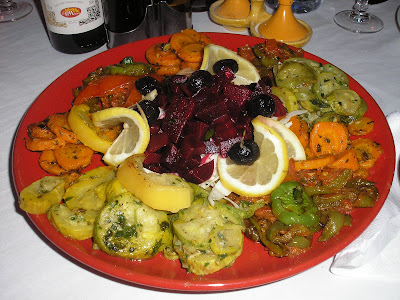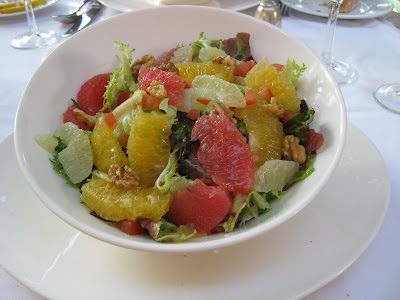 This refreshing salad is not only beautiful but so easy to prepare!
This refreshing salad is not only beautiful but so easy to prepare!Pear and Prosciutto "Carpaccio" with Balsamic Vinegar Reduction
(Adapted from a recipe from Everyday Food by Martha Stewart)
Serves 2
1/2 cup balsamic vinegar
1 red Bartlett pear, cored, halved, and thinly sliced
2 ounces very thinly sliced prosciutto
Mixed baby lettuces (I added fresh purslane leaves)
Freshly-ground black pepper to taste
In a small saucepan, bring vinegar to a boil; cook, stirring occasionally, until syrupy and reduced to 2 tablespoons, about 5 minutes.
Place the lettuces and purslane on a serving platter or on individual plates. Top with pear slices and prociutto. Drizzle with balsamic syrup as desired, and season with pepper.







































